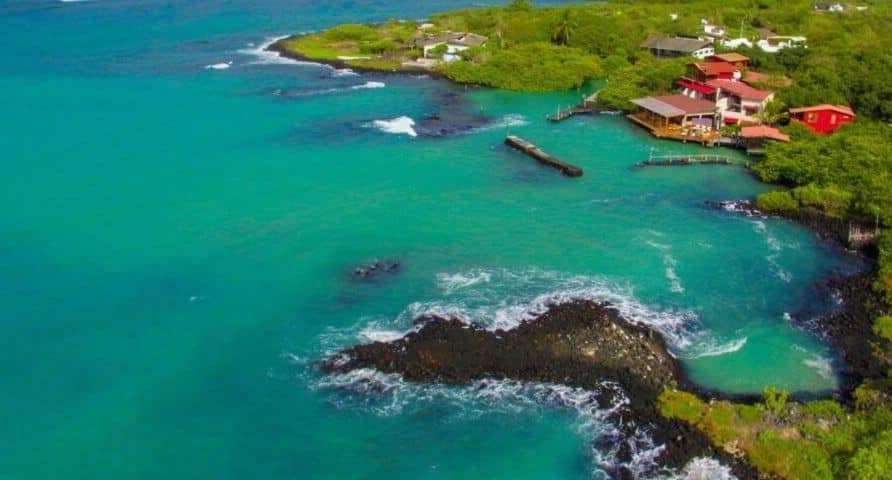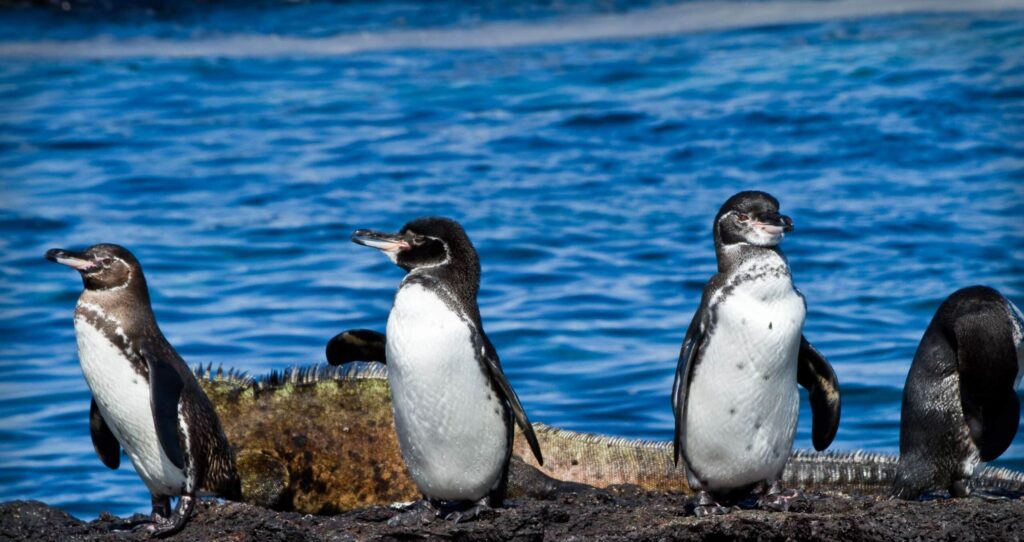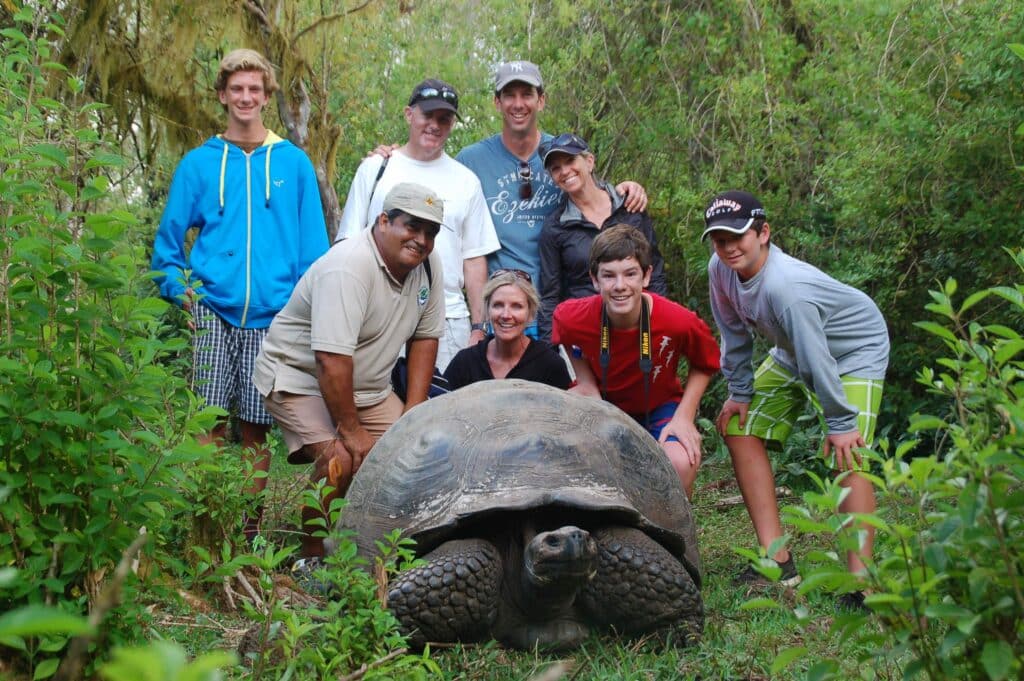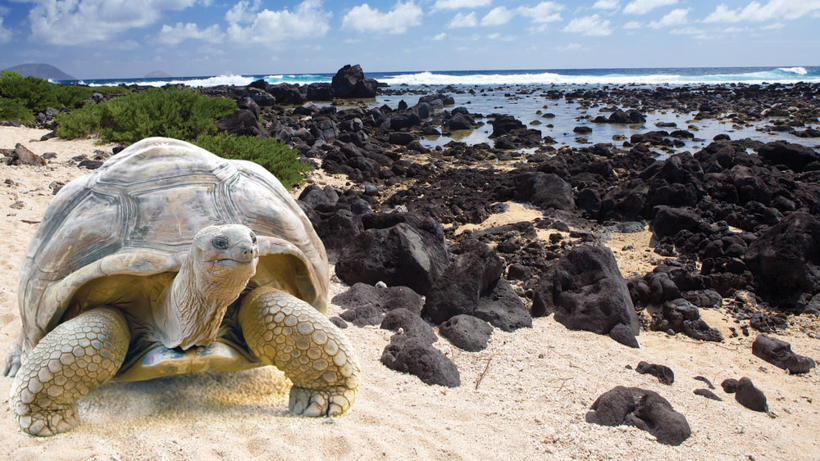The islands are so much bigger than you’ve imagined. It’s amazing how much you see if you base yourself on the islands instead of skimming the coast on a cruise ship.
Here’s the first and maybe most important thing you need to know as you’re deciding how to visit the Galápagos Islands: They are wayyyy bigger than they look on a satellite map. Those 20 random dots, floating 600 miles out in the Pacific off the coast of Ecuador, actually have a total land area of more than 3,000 square miles. One of them has the second-highest volcanic cone on earth.

The Galapagos: More Than Meets the Eye
It’s no wonder so many of us carry that skewed geography in our heads. Think of all those photos of marine iguanas sunning in clusters so tight that they appear to be clinging to a castaway-sized rock. Cruise ship companies have a lot to do with our all-coast-and-no-center sense of the Galápagos, too. And I say that with no disrespect. For years, a Galápagos Islands vacation by cruise was the only way to go. “Experience the primitive islands in civilized comfort.” “See the blue-footed boobies, but don’t live like one.” By definition, the ships skirt the perimeter. You motor to shore in a Zodiac to explore, keeping the mother ship in your peripheral vision. Back on board, the portholes offer a view of the day’s island to remind you that you are in proximity of the land. I’m not convinced this is the best way to experience Galápagos Island travel.
By Ship or By Land?
First, consider this practical, legal disadvantage of ships. Not long ago, the guardians of the islands’ fragile ecosystem passed new regulations to minimize the growing impact of ships and their many passengers. In a nutshell, the rules control where and how often the vessels can park offshore. Disgorging a boatload of avid travelers all at once has an obvious impact on the native wildlife.
Compare that to what happens when you base yourself on the islands. Of course, there are still environmental guidelines to observe. We practice a firm “leave no trace” as part of our sustainable and regenerative travel efforts. Nevertheless, a small group of travelers—in our case no more than 18 or so—doesn’t overwhelm a penguin-y beach. We have more leeway to move about with our local guides, making our Galápagos Island tours as authentic as it gets. We can go places that a cruise ship can’t touch. If the weather shifts or the sea lions go nuts over a passing school of delectable fish, we adjust our plans accordingly.

Getting Up Close with Galapagos Wildlife
Fortunately, the animals here don’t have a natural fear of humans. Galápagos Island tours can bring you nearly nose-to-beak with a penguin. In the water, you never quite know who’s going to swim up for a friendly, closer look. Yet on the occasions when I’ve seen larger groups of people interact with the unruffled wildlife, I just can’t help feeling that the balance is off, that in their wake, things aren’t quite as natural as they were before. We stick to our role as guests in their home and are careful not to behave like the dominant species.
I love to tell the story of my sons encountering giant land tortoises on one of our Galápagos Island vacations. There were just a few of us there in that moment (12 to be exact), and the tortoises out-numbered us. We were so close that we could hear them breathe, though the kids called it “Vadering” because the deep, slow rasps echoed like Darth Vader’s ominous trademark sound. That kind of intimacy, that ability to observe without disturbing, is what makes this wildlife experience so amazing.

I’m a traveler, not a tourist. By that, I mean that I’m happiest when I’m interacting with locals and don’t have to share experiences with a big crowd. In the Galápagos, one trick is to head for an island’s interior, miles beyond the usual coastal zone that cruise ships inhabit. For example, on Isabela Island, I love to go walking on Volcan Sierra Negra. Its active caldera covers almost 30 square miles, and one or our local friends says that fumaroles and formations make it feel like a stroll on Mars. And during a stay on San Cristóbal Island, I like to spend time with a local family on their coffee plantation.
Unwinding in Iguana Crossing
You’ll notice I mention actual people living on these islands. There aren’t masses of them. About 1,800 people live on 1,800-square-mile Isabela. But their presence answers the question you probably have about how it’s possible to spend your days and nights on land. In the past few years, they have opened some truly wonderful eco-lodges in the islands’ small towns. Like most of them, the Hotel Iguana Crossing sits at the water’s edge. You get the sea, but you’re not marooned on it, which puts the magic of Galápagos Island land tours right at your feet every morning. This easily surpasses the comfort on any ship. At sunset, this place always makes me feel a little sad for the folks anchored offshore. While they walk laps around the deck, I get to go for a stroll through town on unpaved streets of sand. There’s always somebody who knows how to read tomorrow’s weather from the clouds. I can plop down for a fresh plate of ceviche. Sometimes, you even see an iguana, crossing. Which is quite perfect in my book.





